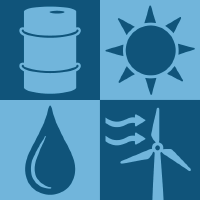Topic Menu
► Topic MenuTopic Editors


Industrial Control Systems
Topic Information
Dear Colleagues,
The industrial control systems sector has experienced significant growth in the last few decades. Technological innovations, combined with immense pressure on manufacturers to meet deadlines, have led to increased adoption of automation in factories. Due to the Internet of Things, collaborative robots, automated test equipment and smart sensors, human error is minimized, while system efficiency, reliability and work rates are expedited. Connecting machines through sensor networks and collecting measurement data in real time has made it possible to reduce product defects and downtime and shift to predictive maintenance. In more recent times, the work of researchers has also focused on how industrial automation can help in reducing energy consumption, emissions, and waste. Therefore, we are pleased to invite the research community to submit review or regular research papers on, but not limited to, the following relevant topics related to industrial control systems:
- Instrumentation and measurement;
- Supervisory control and data acquisition;
- Smart sensing and monitoring;
- Human activity recognition;
- Fault detection;
- Edge artificial intelligence;
- Smart applications;
- Predictive maintenance in manufacturing;
- Embedded intelligence;
- Visual recognition;
- Distributed control systems;
- Wireless sensor network;
- Sustainability.
Prof. Dr. Mauro D'Arco
Dr. Francesco Bonavolontà
Topic Editors
Keywords
- instrumentation and measurement
- supervisory control and data acquisition
- smart sensing and monitoring
- human activity recognition
- fault detection
- edge artificial intelligence
- smart applications
- predictive maintenance in manufacturing
- embedded intelligence
- visual recognition
- distributed control systems
- wireless sensor network
- sustainability
Participating Journals
| Journal Name | Impact Factor | CiteScore | Launched Year | First Decision (median) | APC | |
|---|---|---|---|---|---|---|

Energies
|
3.2 | 5.5 | 2008 | 16.1 Days | CHF 2600 | Submit |

Materials
|
3.4 | 5.2 | 2008 | 13.9 Days | CHF 2600 | Submit |

Resources
|
3.3 | 7.7 | 2012 | 23.8 Days | CHF 1600 | Submit |

Sensors
|
3.9 | 6.8 | 2001 | 17 Days | CHF 2600 | Submit |

Sustainability
|
3.9 | 5.8 | 2009 | 18.8 Days | CHF 2400 | Submit |

MDPI Topics is cooperating with Preprints.org and has built a direct connection between MDPI journals and Preprints.org. Authors are encouraged to enjoy the benefits by posting a preprint at Preprints.org prior to publication:
- Immediately share your ideas ahead of publication and establish your research priority;
- Protect your idea from being stolen with this time-stamped preprint article;
- Enhance the exposure and impact of your research;
- Receive feedback from your peers in advance;
- Have it indexed in Web of Science (Preprint Citation Index), Google Scholar, Crossref, SHARE, PrePubMed, Scilit and Europe PMC.

